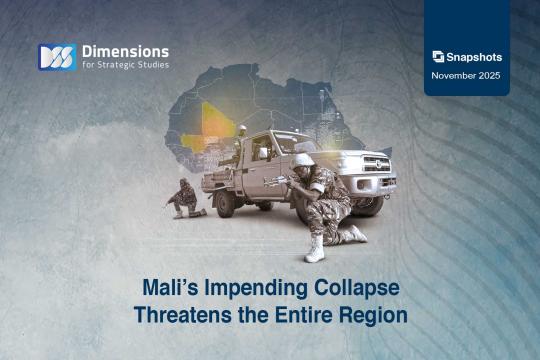
Islamic State Escalates Threats Against Afghanistan’s New Rulers
2024-02-271849 view
On February 18, the Islamic State group’s media channels in Afghanistan published a video entitled “Fight all the Polytheists”. It included footage of a number of prominent Taliban figures killed by the organization, as well as a picture of Afghanistan’s de facto Foreign Minister, Taliban figure Amir Khan Muttaqi.
The video, lasting over 55 minutes, presented IS’s official position on the Taliban, its refusal to submit to its authority and its absolute rejection of the Taliban’s stance on human rights and search for international recognition.
The video starts by presenting the IS narrative on the “Crusader” world and the American occupation of Afghanistan, as well as its own jihad against NATO, the U.S., and corrupt Afghan governments. It portrays the Taliban’s negotiations with the Americans as a ruse to gain power and “serve Western agendas at a discount”.
The video featured footage of dozens of IS attacks against its various opponents before the US withdrawal from Afghanistan, through various means including rockets and rocket-propelled grenades, suicide operations, throat-cuttings, raids on offices and homes, and assassinations in the streets.
The operations after the US withdrawal mainly targeted key Taliban officials such as the governor of the city of Takhar, the deputy governor of Badakhshan province, and pro-Taliban religious figures such as Mohammed Atif Mulla, head of the Islah association in Kabul, and Rahimullah Haqqani, one of the movement’s most prominent contemporary religious scholars.
IS explicitly rejected the entire process of negotiations between the U.S. and the Taliban in Qatar, describing it as a “bad seed” that would grow into a government “made in Doha” that would not rule by the command of God, would fight against jihad, desperately seek a seat at the United Nations, and put in power the “tyranny of polytheism and elections” in exchange for the crumbs of power.
The video also carried political messages, rejecting cooperation with India, China, and Russia. It accused the Taliban of becoming a “bearded tyrant” implementing the agenda of Satan, meaning IS had no option other than to target the interests of these countries. Accordingly, it showed a suicide attack against Chinese hotel in Kabul in late 2022, an attack on a Hindu and Sikh temple in May 2022, repeated attacks on Husayniyyas (Shiite congregation halls) and other sites of the Shiite minority in Balkh Province, and an attack against the Russian embassy in September 2022.
It is notable that the fighters who carried out these attacks came from various ethnic groups within Afghanistan, including Uyghurs, Tajiks and Uzbeks, implicitly inciting these groups against the Taliban regime and urging them to target Taliban interests and personnel.
IS is undoubtedly keen to thwart the Taliban’s efforts to gain international recognition. This may motivate it to step up attacks against the interests of countries seeking to cooperate with the Taliban economically or politically. IS may also carry out further acts of violence against Taliban collaborators, members and leaders, with the aim of weakening Afghanistan’s domestic security, as well as attracting recruits who reject Taliban policies or have grievances against the movement. This risks dragging Afghanistan back to a state of chaos that IS could exploit in order to expand still further.





